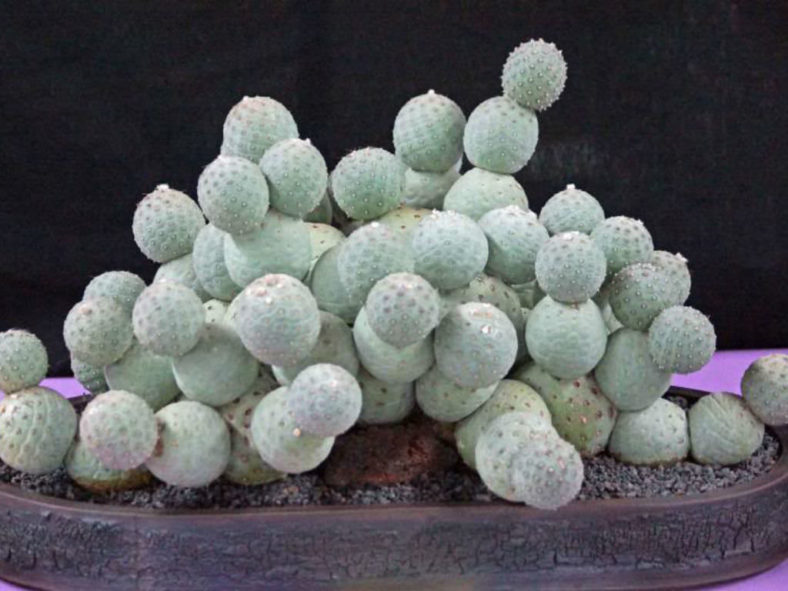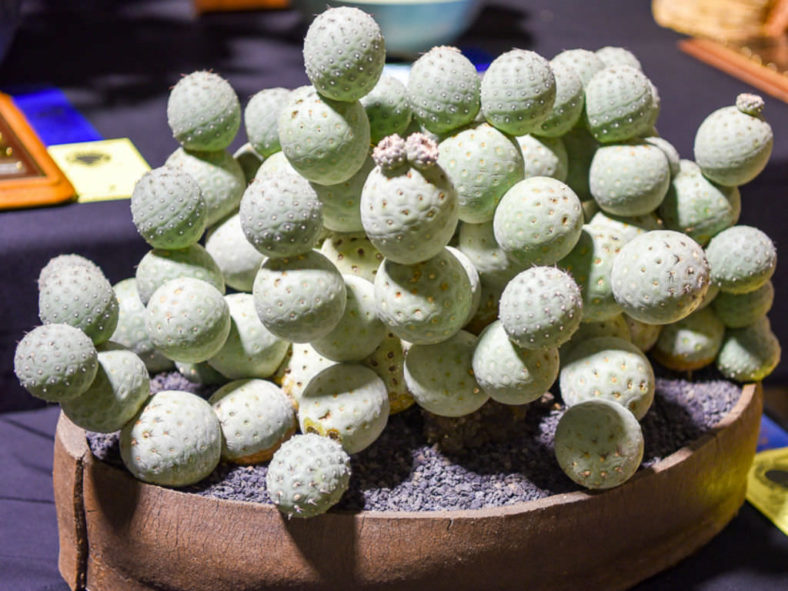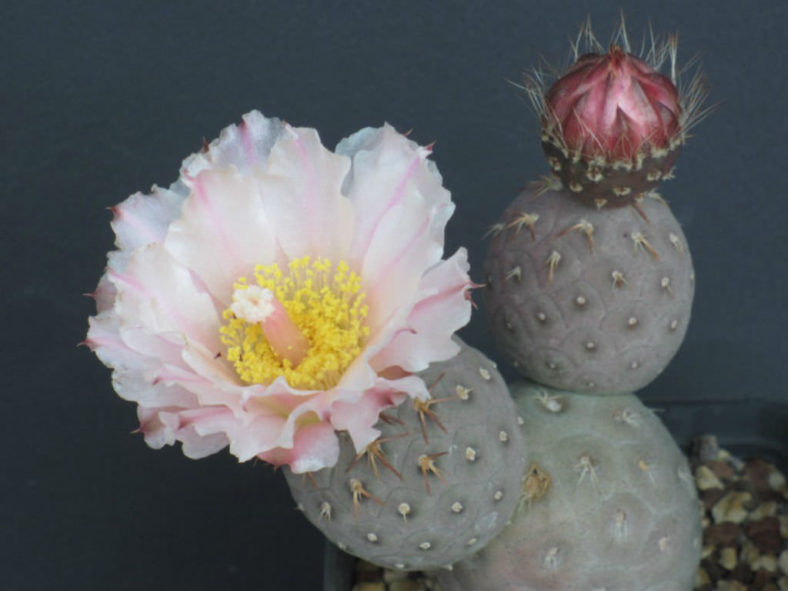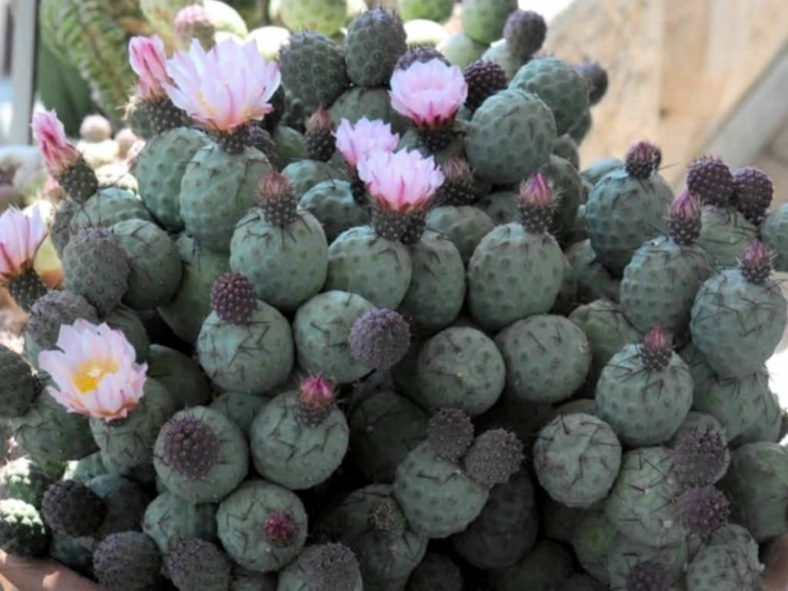Scientific Name
Tephrocactus geometricus (A. Cast.) Backeb.
Synonym(s)
Opuntia geometrica, Tephrocactus alexanderi var .geometricus
Scientific Classification
Family: Cactaceae
Subfamily: Opuntioideae
Tribe: Tephrocacteae
Genus: Tephrocactus
Etymology
The specific epithet "geometricus" (pronounced "jee-oh-MET-ree-kus") means "geometrical" and refers to the almost perfectly spherical stem segments of this species, giving it a geometric appearance.
Origin
Tephrocactus geometricus is native to western Argentina. It occurs in Catamarca Province and areas near the Bolivian border.
Description
Tephrocactus geometricus, also known as Tephrocactus alexanderi subsp. geometricus, is a small, branched cactus that forms attractive clumps of segmented, usually spineless stems. It can grow up to 6 inches (15 cm) tall. The stem segments are spherical and can reach a diameter of 2 inches (5 cm). They are gray-green to blue-green in color and take on a red to purple hue in intense sunlight. The spines are sporadically present in the upper areoles.
The white to light pink flowers with a darker midstripe appear in summer and last only one day.

How to Grow and Care for Tephrocactus geometricus
Hardiness: USDA hardiness zones 9a to 11b: from 20°F (-6.7°C) to 50°F (10°C).
Although the large variety of species within the Opuntia genus means that different types of Prickly Pears may require slightly different care. All are desert cacti that require ample sunlight, bright light, and minimal water. If you live in a hot, arid area, these plants can generally be planted outside, left alone, and enjoyed without additional care.
These cacti will thrive in a garden but can also be successfully grown in pots. To repot, ensure the soil is dry, remove the pot, and remove the old soil. After treating any cuts with fungicide, place the cactus in a new pot and backfill it with potting soil. As with a new cutting, ensure not to water a newly repotted Prickly Pear briefly to avoid rotting its roots.
Opuntia can propagate either by cuttings or by seed. To propagate by cuttings, sever pads from a plant and allow them to dry so the wounds can heal. Then, place the plants in dry soil and refrain from watering them until they begin to grow, to avoid rotting.
Learn more at How to Grow and Care for Opuntia.
Links
- Back to genus Tephrocactus
- Succupedia: Browse succulents by Scientific Name, Common Name, Genus, Family, USDA Hardiness Zone, Origin, or cacti by Genus
Photo Gallery
Click on a photo to see a larger version.


